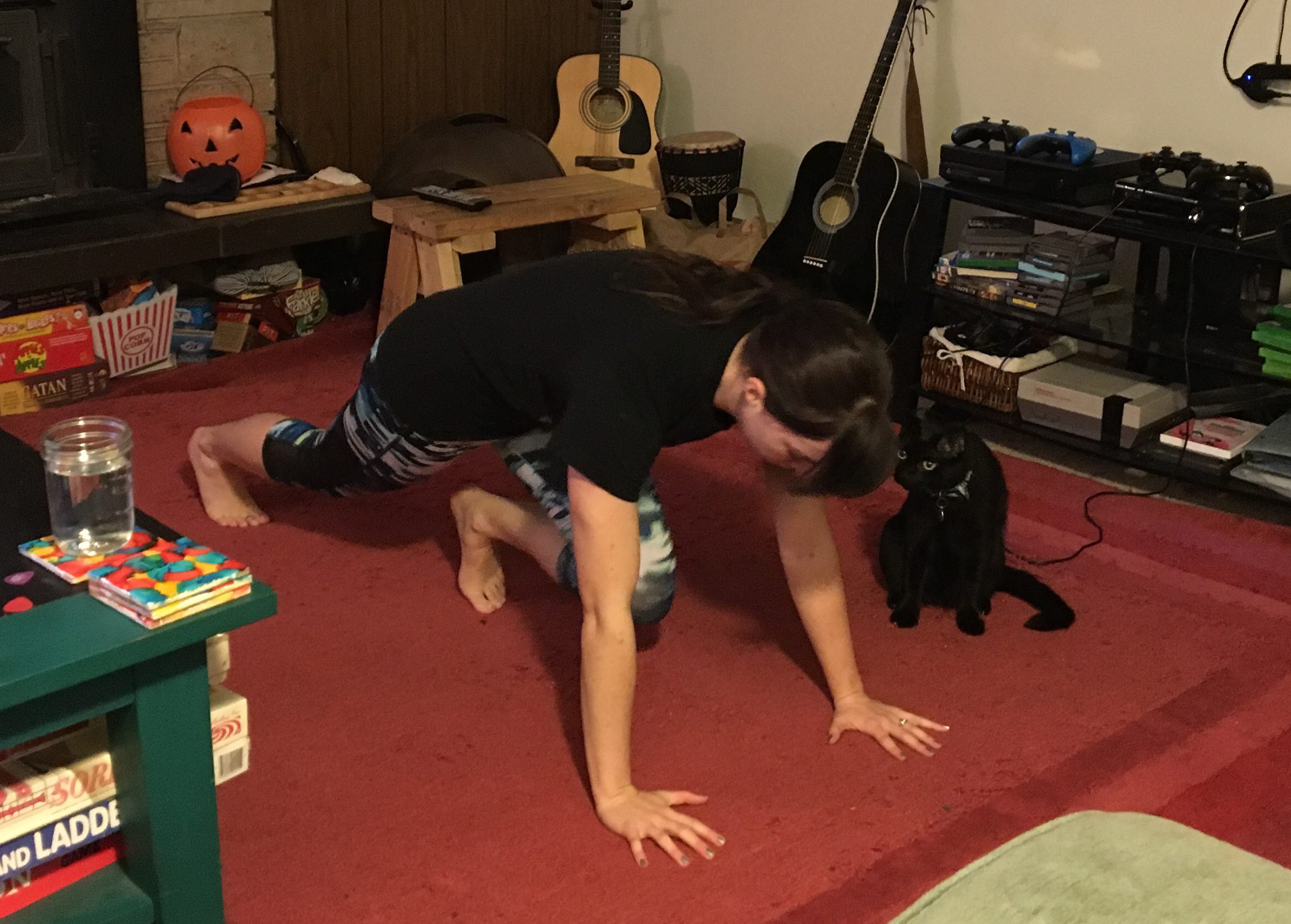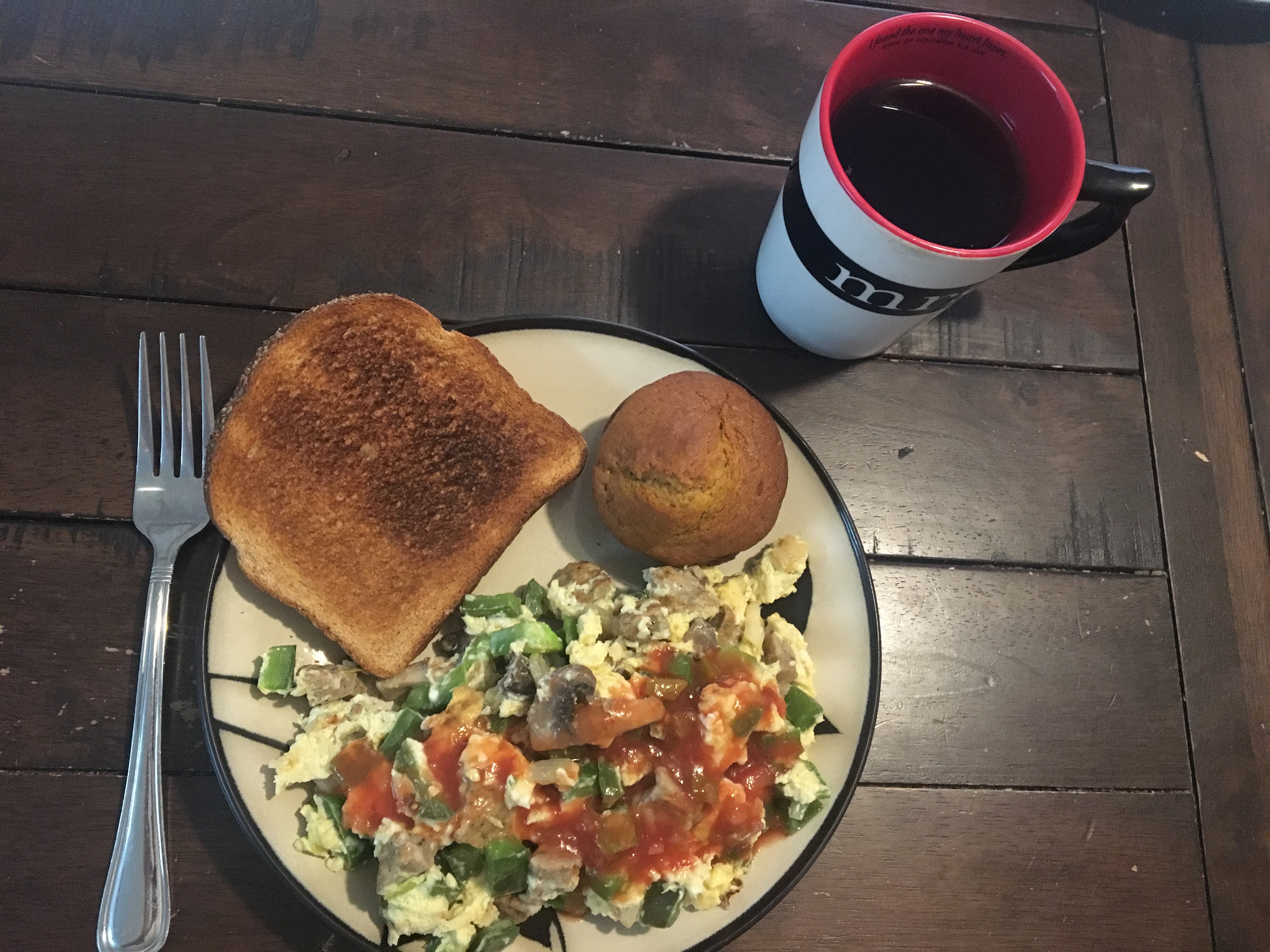Based on my experience with intermittent fasting, I have discovered a few characteristics of a person who might really thrive on intermittent fasting. Check out the list below to see if you might be one of them!
Likely Good Candidates:
- Absent or minimal hunger cues or doesn’t mind being hungry – I often hear “I often forget to eat” or “I could go all day without eating”
- Not usually hungry in the morning/prefers to skip breakfast
- Dislikes the structure of tracking calories daily
- Prefers limiting intakes significantly sometimes and not regulating at all at other times
- Schedule that allows eating at “unconventional” times (for 16:8 protocol)
- Goals might include: weight loss, decreased inflammation, reduced risk for chronic diseases like diabetes, heart disease, Alzheimer’s
Likely Not Good Candidates:
- Frequent hunger (every 3-4 hours or less)
- Regular breakfast eater
- Prefers more structured eating regimen
- Prefers moderating intakes a little each day to an “all or nothing” mindset
- Goals might include: weight loss, muscle gain, reduced risk for chronic diseases like diabetes, heart disease, Alzheimer’s
If you want to learn more about creating a personalized plan to meet your goals and fit your lifestyle, visit my practice website and set up an appointment!
I’ve been busy researching, reading, and compiling more information from scientific studies done on intermittent fasting and its potential benefits. This is part two, but you can go here to read about more research on fasting or here if you’re not sure what intermittent fasting is all about.
Can intermittent fasting…
…improve blood sugars and prevent/manage diabetes?
- Animals that ate intermittently exhibited resistance to diabetes and improved blood glucose and insulin sensitivity, even if they did not achieve caloric restriction (Anson et al 2003; Duan et al 2003)
- Animals on daily caloric restriction have lower fasting blood glucose, fasting insulin, reduced inflammatory markers, and improved insulin sensitivity (Lane, Ingram, Roth 1999; Imai 2010; Hursting et al 2003; Lane et al 1995; Wang et al 2007; Bonkowski et al 2006; Okauchi et al 1995; Walford et al 1999; Walford et al 2002; Wang et al 2007; Kalani et al 2006)
- Human results on intermittent fasting are mixed:
- One study found no change in glucose but lower fasting insulin after 22 days of intermittent fasting (Hielbronn et al Jan 2005).
- One study found that, while fasting, subjects with diabetes had higher blood sugar levels (Saada et al 2010).
- Another found that after 22 days of intermittent fasting, women’s bodies showed more difficulty clearing blood glucose but that there was no difference in men. Men also had a decreased insulin response, but women didn’t. (Hielbronn et al Mar 2005).
- Another study found no change in glucose or insulin in men after 14 days of intermittent fasting (Halberg et al 2005).
- Two studies found that in humans, insulin sensitivity is more improved with fasting than with caloric restriction (Varady & Hellerstein 2007; Harvie et al 2010)
- Humans on caloric restriction showed lower fasting insulin levels, improved insulin sensitivity, and lower blood glucose. (Hielbronn et al 2006; Weiss et al 2006; Fontana et al 2004).
- The boiled-down verdict: Animals show improvements in blood glucose, insulin sensitivity, and resistance to diabetes with both intermittent fasting (without caloric restriction) as well as caloric restriction (without intermittent fasting). In humans, research on intermittent fasting and blood sugars delivers mixed messages, which probably means there are other factors involved that we don’t understand yet. There might be a gender difference in the blood glucose response to intermittent fasting. Several studies showed that daily caloric restriction can improve fasting insulin levels, insulin sensitivity, and blood glucose in humans.
…treat asthma?
- In one study, intermittent fasting reduced airway resistance, reduced inflammation, and improved the medicinal effects of albuterol in patients with asthma. (Johnson et al 2007)
- The boiled-down verdict: We need more research, but intermittent fasting may have some promising benefits for those with asthma.
…decrease risk of heart disease?
- In animals, caloric restriction has led to lower triglycerides, better cholesterol panels, and reduced inflammatory markers (Edwards et al 1998; Wang et al 2007; Kalani et al 2006; Lane, Ingram, Roth 1999).
- Animals on intermittent fasting and caloric restriction have lower blood pressures and heart rates (Tikoo et al 2007; Wan et al 2003; Lane, Ingram, Roth 1999; Wang et al 2007; Fontana et al 2004; Mager et al 2004).
- In humans, similar improvement is seen in cholesterol, inflammatory markers, and blood pressure with caloric restriction via intermittent fasting (Harvie et al 2011, Varady et al 2009; Walford et al 1999, Walford et al 2002).
- The boiled-down verdict: It seems you can protect your heart with lowered cholesterol, inflammation, and blood pressure by reducing calories, either by eating a little less every day or by intermittent fasting.
…slow cancer?
- Animals that eat intermittently exhibit slowed tumor growth, improved the effectiveness of chemotherapy, and reduced side effects of chemotherapy (Berrigan et al 2002;Lee at al 2012).
- In mice, intermittent fasting without caloric restriction reduced the occurrence and growth of lymphoma (Descamps et al 2005).
- Several studies show that animals with tumors had slower tumor growth and lived longer when calorically restricted with adequate protein, vitamin, and mineral intakes (Weindruch et al 1986; Pashko & Shwartz 1996; Pugh et al 1999; Imai 2010; Hursting et al 2003); however, one study showed mice had no slowing of tumor growth when on caloric restriction (Keenan et al 1997).
- Reviews of animal research conclude that the cancer prevention/slowing benefits are similar between intermittent fasting and calorie restriction (Varady & Hellerstein 2007).
- The boiled-down verdict: Research on the benefits of caloric restriction for cancer is mixed. Intermittent fasting may slow tumor growth and improve the effects of cancer treatment in animals. We need more research to know how these effects may transfer over to humans.
And just like that, 3 weeks of intermittent fasting is over. In the last week, I changed the structure of my intermittent fasting a little bit. I followed a pre-made intermittent fasting plan that had a 12 pm – 8 pm eating window and planned meals and workouts. The workouts were more targeted for fat loss and not for muscle building (which were my goals with my previous workouts). Changing the workouts allowed me to aim for slightly lower calorie goals since losing fat requires fewer calories than gaining muscle.
Let’s review the entire three weeks, shall we?
How it Went:
Unfortunately, I did not enjoy the experience of intermittent fasting. I’m a lifelong breakfast eater – can’t even remember ever skipping one – so not eating until 10 am or noon (depending on my window) was pretty miserable. I was super hungry, weak, and tired in the mornings, and I noticed that I was more tired as the three weeks went on. I’m not sure if this was related to the eating schedule itself or not, because I also realized that throughout the three weeks I ate fewer vegetables than normal. This was sort of an interesting “side effect” of the eating schedule. Because I was trying to fit all my macros in a small window (and was full throughout most of that window), I ate vegetables less often because I didn’t have space for them! For the most part, vegetables have very few macronutrients (carbs, protein, or fat) and a lot of micronutrients (vitamins and minerals). I often recommend clients increase vegetable intake to help with fullness without adding a lot of calories or macronutrients – the opposite happened here! I was so full throughout the eating window that I strayed away from veggies and towards things that were going to help me meet my macro goals. As a result, my vitamin and mineral intake was much lower than normal, and could definitely have caused my tiredness.
One positive change I noticed is that I liked not eating later in the evening. There are reasons to avoid eating close to bedtime, and having a set time that my eating window “closed” prevented me from going to bed on a stomach full of energy I didn’t need, as well as habitual (not hunger-driven) nighttime snacking and desserts. I usually felt pretty good in the evenings.
As a side note, I love to cook and eat food in general, but I tended not to look forward as much to eating because I was either hungry and waiting to eat or full and had to eat anyway. Eating this way was much less enjoyable and satisfying for me than intuitive eating on a schedule that works well for my body.
What I Learned:
While reviewing the research on intermittent fasting this week, I discovered that researchers have almost exclusively studied alternate day or 5:2 fasting protocols rather than the 16:8 protocol that I followed. If you’re confused about what those protocols mean, check out this post. I wish I would have read through more research before I started, because I might have followed those protocols instead just to match the research.
From a dietitian’s perspective, I learned that there are certain people with certain goals who are good candidates for intermittent fasting and for whom it might work wonderfully. In fact, throughout my time on this diet I met several people (or found out about people I already knew) who use intermittent fasting to regulate their intakes and benefit their health. I plan to summarize characteristics of those folks in an upcoming post! The research is clear that intermittent fasting is one way to achieve quite a few health goals (though there are other ways!). In my practice, I will keep intermittent fasting as another option in my dietitian “tool belt” to help create plans that best match each client’s personality, lifestyle, and goals.
How I did and What Changed:
Overall in 3 weeks, I lost 3.6 lbs, 1.75″ from my waist, 1″ from my thighs and 1.6% body fat. Not too shabby!
| Goal | Week #1 | Week #2 | |
| # of days 16-hour fast was achieved | 7 | 6 | 7 |
| Average daily protein intake | 90 grams | 85.4 grams | 82.2 grams |
| Average daily carb intake | 225 grams | 209 grams | 205 grams |
| Average daily fat intake | 60 grams | 73.2 grams | 64 grams |
| Weight change | 0 lbs | -1.2 lbs | |
| Body fat % change | -.5% | -.5% | |
| Waist measurement change | -1″ | +.75″ | |
| Hip measurement change | 0” | 0” | |
| Thigh measurement change | -1″ | +.5″ |
The third week is on its own because when I changed my workouts, my calorie and macro needs changed. The meal plan I used that week must have been built on different macro targets than I had set, because I ended up higher on fat and lower on carbs and protein in general. I did the best at hitting my macro goals in the second half of week two, when I broke my needs down into a schedule with macro goals at each meal. It’s important to note here, though, that in the research studies, they often did not track macros or make sure that subjects were meeting their calculated macro needs. In fact, in many of the human studies, the subjects often did not end up meeting their calculated calorie needs.
| Goal | Week #3 | |
| # of days 16-hour fast was achieved | 7 | 6 |
| Average daily protein intake | 80 grams | 66 grams |
| Average daily carb intake | 200 grams | 159 grams |
| Average daily fat intake | 53 grams | 71 grams |
| Weight change | -2.4 lbs | |
| Body fat % change | -.6% | |
| Waist measurement change | -1.5″ | |
| Hip measurement change | 0” | |
| Thigh measurement change | -.5″ |
There are a lot of health claims around the benefits of intermittent fasting. As there is so much to say about this topic, I had to split the research into two parts. I am sure this is nowhere near a comprehensive compilation, but I have done my best to boil down the results of a variety of research studies on the potential benefits of intermittent fasting.
One major thing to note as you read through this is that there are a lot of documented health benefits to eating less than we usually do, or in scientific terms, caloric restriction. Most studies on intermittent fasting restricted intakes to 0-50% of the participants’ calorie needs for 2-4 days per week. On the rest of the days, they could eat as much as they wanted. Some studies on intermittent reported subjects overall caloric intake, others didn’t, so it can be tough to make that distinction. In general, when animals are on an intermittent fasting regimen, they eat enough on feeding days to compensate and usually do not end up restricting calories (Anson et al 2003; Descamps et al 2005). Humans, however, usually do not eat enough to compensate and end up restricting calories via intermittent fasting (Harvie et al 2011; Heilbronn et al 2005; Catennaci et al 2016). In other words, the results in many of the human studies could be based on the fact that calories were restricted by fasting, not by anything special about fasting itself. We need more research to distinguish between the two!
Can intermittent fasting…
…cause fat loss?
- Animals on both intermittent fasting and caloric restriction lose fat (Anson et al 2003; Lane, Ingram, Roth 1999; Pashko & Shwartz 1996; Duan et al 2003). One study on mice showed that even though the mice on intermittent fasting averaged the same amount of calories as the normally-fed mice, they did weigh a little less (Anson et al 2003).
- Humans lose fat with intermittent fasting too, though most humans who followed intermittent fasting ended up eating fewer calories overall, also achieving caloric restriction (Harvie et al 2011; Heilbronn et al 2005; Catennaci et al 2016). It is relevant to note here that in studies that asked subjects about their hunger levels, subjects were more hungry on an intermittent fasting diet.
- In one study, women who restricted calories via intermittent fasting lost more body weight than women on daily caloric restriction (Harvie et al 2013). In both cases, their calories were restricted.
- One study found no difference in metabolism (measured by resting metabolic rate (RMR)) between those who had intermittently fasted and those who did not (Heilbronn et al 2005).
- Studies on caloric restriction show that subjects tend to lose muscle mass while losing fat, but can prevent this by eating a high-protein diet while restricting calories (Piatti et al 1994). Two studies have shown that while intermittent fasting, subjects lost fat and were able to maintain muscle mass while eating a lower protein diet (Bhutani et al 2010; Catennaci et al 2016).
- The boiled-down verdict: Fat loss can be achieved by eating less overall, either through eating a little bit less each day or fasting (eating ~25% of your daily needs) every other day or a couple of days per week. Based on limited research, it seems you can maintain muscle while losing fat, either by restricting calories and eating plenty of protein, or by restricting calories using intermittent fasting. It’s possible that weight loss could be faster when calories are restricted via intermittent fasting, but more research is needed to confirm that.
…preserve brain function?
- Animals that eat intermittently experienced slower progression of age-related memory loss and neurodegenerative diseases (Parkinson’s, Hungtington’s, and Alzheimer’s) (Anson et al 2003; Halagappa et al 2007; Duan et al 2003). This is also seen with caloric restriction in both animals and humans (Imai 2010;Hursting et al 2003; Pitsikas et al 1990; Halagappa et al 2007; Yu and Mattson, 1999).
- Mice on calorie restriction via intermittent fasting had less brain damage during and after a stroke than mice who ate all they wanted (Arumugam et al 2009).
- The boiled-down verdict: In mice, it’s possible to prevent and slow brain aging, damage, or diseases by eating less overall, either through eating a little bit less each day or fasting every other day. We need more research to know how this applies to humans.
…help you live longer?
- Animals that eat intermittently (every other day) can live more than 30% longer than those who eat daily (Goodrick et al. 1983; Anson et al 2003, Duan et al 2003).
- Mice lived 35-60% longer when on caloric restriction but meeting protein, vitamin, and mineral needs (Weindruch et al 1986; Imai 2010; Hursting et al 2003; Canto & Auwerx 2009; Keenan et al 1997, Pugh et al 1999)
- The boiled-down verdict: As long as macronutrient, vitamin, and mineral needs are met, both intermittent fasting and caloric restriction can promote longevity in animals. Human research on longevity is really tricky (and expensive), so that’s lacking.
Check out this post to learn about the research on intermittent fasting and diabetes, cancer, asthma, and more!
How it Went:
I’ve still been so hungry in the mornings waiting to break my fast. This leads to crabbyness (the severity of which depends on who you ask…). Then, once I’m able to eat, I feel like I’m constantly eating to hit my macro goals. Eating when I’m not hungry leads to crabbyness. These are unfortunate happenings. During this week I missed my macros for a couple days and one morning hit a blood sugar low during my workout that forced me to realize I need more structure to get my macros in throughout the day. You can read about that here. After I created a more specific eating schedule, I was able to get my macros in a little easier, but I still felt hungry in the mornings and very full during my eating window. I haven’t really felt great at all since I started intermittent fasting.
On the flip side, my pants are definitely fitting better and I can tell that I’ve lost a bit from my waist overall. The measurements don’t reflect it this week because, unfortunately, this is the nasty week of water retention (or as my husband and I refer to it, the “natural disaster”). I expect that next week’s numbers will go back down again.
What I learned:
My fitness goal right now is primarily to gain strength and muscle and maintain cardiovascular fitness and flexibility. I’ve been using a heavy weight lifting routine (along with some moderate cardio and yoga) to achieve that goal for several months now. Lifting heavy and gaining muscle requires an increase in calorie intake to sustain muscle building and recovery, but I’ve found that I really can’t comfortably meet that goal in an intermittent fasting window. When I was eating normally, I didn’t have any trouble meeting that goal because I had more time to digest food before eating again.
I lamented about my struggles to my intermittent fasting coach friend Emily Arger, who offered to let me try her 7-Day Whittle Your Waist plan. The workouts included in her plan are designed to pair better with intermittent fasting than my heavy lifting plan, since I won’t need as many calories/macros. The main goal of the plan (as you might gather from the name), is fat loss. This is a shift from what my actual personal goals are, but I learned that heavy lifting/muscle gain is a very tricky thing to accomplish while intermittent fasting, at least for me. I started her new workout plan today, which includes 25-30-minute Tabata-style high intensity interval training (HIIT) workouts. My cat was impressed…and possibly confused.

How I did and what changed:
| Goal | Week #1 | Week #2 | |
| # of days 16-hour fast was achieved | 7 | 6 | 7 |
| Average daily protein intake | 90 grams | 85.4 grams | 82.2 grams |
| Average daily carb intake | 225 grams | 209 grams | 205 grams |
| Average daily fat intake | 60 grams | 73.2 grams | 64 grams |
| Weight change | 0 lbs | -1.2 lbs | |
| Body fat % change | -.5% | -.5%% | |
| Waist measurement change | -1″ | +.75″ | |
| Hip measurement change | 0” | 0” | |
| Thigh measurement change | -1″ | +.5″ |

This week I’ve been really struggling to get my macronutrients (aka carbs, protein, and fat) in during my

8-hour eating window. I’ve just been too stuffed near the end of my window to get them in. For the past couple of days, I’ve been under my macro goals and I am really starting to feel it the next morning. Today, my workout was a struggle. I hit the worst blood sugar low I’ve had yet during my fast this morning, and it was rough.
I always like to make eating plans as flexible as I can while still hitting goals, but it’s pretty clear that trying to hit my macro goals while intermittent fasting isn’t going to happen without a bit more structure. I sat down, created an eating schedule by dividing my eating window up and scheduling meals and snacks, and dividing my macro goals amongst them. My first breakfast on this plan: egg and veggie scramble with low fat sausage and salsa, a slice of whole wheat toast, and a homemade muffin.

My macro goals for this meal: 55 grams carbohydrate, 20 grams protein, and 15 grams fat.
Actual intake from this meal: 55 grams carbohydrate (on the nose!), 25 grams protein, and 25 grams fat (I gotta work on getting this down…).
I am STUFFED. I’m used to eating a little bit less than this and spreading it out more throughout the day. At least I got in all the macros I needed to with this meal (and a little bit more). We’ll see how the next few days go with hitting macro goals. I’m hoping it will help with my hunger and low blood sugar in the mornings.

Diet culture is determined to tell you that you have to be miserable to be healthy.
That couldn’t be more wrong.
Subscribe to learn how to go from a frustrated, restricted dieter to a happy, relaxed relationship with food and fitness. Healthy doesn’t have to be hard!





